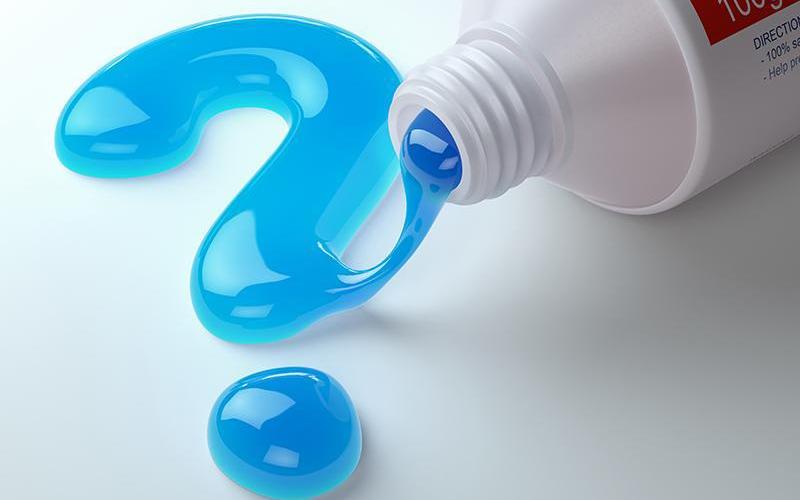Will Fluoride Toothpaste Prevent Cavities?
Did you know that your choice in toothpaste is one of the most important health decisions you can make? It’s true! In fact, the American Dental Association (ADA) recently confirmed what our practice has said for years...fluoride toothpaste prevents cavities!
The cavity-fighting properties of fluoride hopefully isn’t news to you. While the mechanical action of brushing and flossing regularly are very important, you need to choose fluoride toothpaste to prevent tooth decay.
The question of fluoride is one that is frequently brought up by patients, the media, and often by people that are selling something. Some health-related questions aren’t exactly clear, such as the “best” diet or how you should exercise. But the science on fluoride is crystal clear - it significantly reduces rates of tooth decay because it helps protect and rebuild tooth enamel.
Why They Put Fluoride in Toothpaste
Fluoride is a naturally-occurring mineral our bodies use to build and protect teeth. We find trace amounts of it regularly in plants, water, and food.
The relationship between fluoride and teeth was discovered over 100 years ago in Colorado Springs. Dr. McKay opened a new dental practice in town and noticed that a startling number of patients had enamel fluorosis on their teeth, a result of excessive fluoride naturally occurring in the town water supply. Furthermore, they experienced far lower rates of tooth decay than would be expected.
Studies demonstrated that fluoride was responsible for both conditions. That raised an important question: Is there an amount of fluoride that will prevent cavities, but won’t stain teeth?
The answer to that question is yes, and it requires only a tiny amount.
Grand Rapids, Michigan took the leap by becoming the first city to intentionally fortify their public drinking water with fluoride. After more than a decade of scientists monitoring the health of the population (and decades more following this work), rates of tooth decay had dropped by more than 60 percent!
Since then, most communities have followed suit and fluoride has become a vital component to toothpaste and other oral health products.
The discovery of the cavity-fighting properties of fluoride is often touted as one of the most important discoveries of the last century. Tooth decay is an issue that will affect nearly everyone at some point, and daily brushing with fluoride toothpaste is the best way to prevent it.
Seventy years of research has proven that fluoride prevents cavities. There is simply no other ingredient with this kind of track record. Dentists have been recommending fluoride toothpaste for decades because it’s the most effective way of delivering fluoride and protecting teeth.
What else is in my toothpaste?
Do you wonder what all of the ingredients in your toothpaste are? Toothpaste formulation is a well-developed science, but patients often have questions about what exactly is in that tube.
Here are the most common types of ingredients you’ll find in toothpaste.
Fluoride
Nature’s cavity fighter is the most important ingredient. Fluoride remineralizes the enamel that protects your teeth, and regular application strengthens the defense against tooth decay. Fluoride toothpaste doesn’t even need preservatives, due to the antibacterial properties of fluoride.
Most people use far more toothpaste than is necessary. Young children should be supervised so they learn to brush properly, making sure they spit (rather than swallow) the toothpaste.
Abrasives
Abrasives don’t directly reduce your risk of cavities, but they do the lion’s share of actual cleaning. Ingredients with fancy names like calcium carbonate, silica gels, and aluminum oxides are designed to gently clean the surface of your teeth without damaging the enamel.
Detergents
You can’t get something clean without a proper detergent! Detergents break up particles so they can be rinsed away, just like detergents designed for dishes or laundry. The most common detergent used in toothpaste is sodium lauryl sulfate, and it’s also responsible for the foaming action.
Humectants and Binders
Humectants and binders are the glue that hold your toothpaste together. Have you noticed how well toothpaste holds up? These ingredients retain the moisture in toothpaste and keep the ingredients from separating from one another. Ingredients like glycerol, sorbitol, gum arabic, and magnesium aluminum silicate are what keep your tube of toothpaste from going dry like a tube of paint would.
Flavoring
If the goal is to encourage people to brush their teeth, then we might need to put something to improve the flavor of the fluoride, abrasives, and detergents. Some sweetening agents, like sorbitol, are pulling double-duty (sorbitol is also a humectant), but no ADA-approved toothpaste will contain sugar or any sweetener that is a risk to your health.
Without Fluoride Toothpaste, You’re Just Going Through the Motions
Choosing the right toothpaste is as simple as starting with the ADA Seal of Acceptance. The ADA has taken the guesswork out of toothpaste selection by certifying which ones are safe, contain an effective amount of fluoride, and have been demonstrated to work.
Choose a fluoride toothpaste with the ADA Seal of Acceptance for the best chance at preventing tooth decay.
Dr. White
817-283-0047

